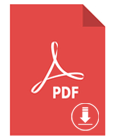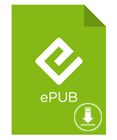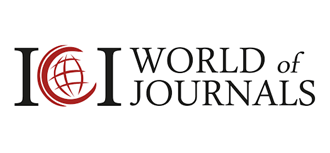Abstract
Objective To investigate the efficacy of Yiqi Huoxue Powder in treating patients with MCI due to Alzheimer’s Disease (AD) in terms of cognition, daily living abilities, and HDS-R scores. Methods A total of 98 patients with MCI due to AD, admitted from August 2023 to August 2024, were randomly divided into an observation group and a control group, with 49 patients in each. The control group received Lamartine Bismylate and Rauwolfia Serpentina Tablet treatment, while the observation group received Yiqi Huoxue Powder in addition to the control group’s treatment. The treatment period was 4 weeks per course, for a total of 3 courses.
Changes in cognition, daily living abilities, and HDS-R scores, as well as clinical efficacy, were observed before and after treatment in both groups. Results The total effective rate in the observation group was 96.8%, significantly higher than the 76.5% in the control group, with a statistically significant difference (P <0.05). After treatment, the observation group showed significantly higher scores in cognition, daily living abilities, and HDS-R compared to the control group, with statistically significant differences (P <0.05). Conclusion Yiqi Huoxue Powder demonstrates significant efficacy in treating MCI due toAD, significantly improving patients’ cognition, daily living abilities, and HDS-R scores.
Keywords:MCI due to Alzheimer’s Disease; Yiqi Huoxue Powder; Cognitive Function
Introduction
Alzheimer’s Disease (AD) is a prevalent cognitive disorder among the elderly, characterized by a long latent period and difficulties in early diagnosis. In its early stages, AD manifests as memory decline, mild psychopathology, and reduced social activity and daily living abilities, placing a heavy burden on families and society. Mild Cognitive Impairment (MCI) due to Alzheimer’s Disease (MCI-AD) represents the early stage of the continuous disease spectrum of AD. According to epidemiological surveys in 2020, there were approximately 38.77 million people with MCI and 15.07 million dementia patients aged 60 and above in China, among which 9.83 million [1] were AD patients. MCI is typically classified into two subtypes based on the presence of memory impairment: Amnestic MCI (a MCI) and Non-amnestic MCI (na MCI). aMCI is primarily characterized by memory impairment, while no MCI manifests as impairments in attention, language, visuospatial functions, and executive functions. Based on the cognitive domains affected, MCI can be further classified into single-domain MCI and multi-domain MCI. The subtype of MCI may provide insights into disease progression, with aMCI having a high likelihood of progressing to typical AD, and naMCI potentially progressing to other types of dementia such as vascular dementia and frontotemporal dementia [2-3].
Materials and Methods
General Information
Ninety-eight patients with MCI due to AD admitted to the Rehabilitation Department and Outpatient Clinic of the Third Veterans’ Hospital of Sichuan Province between August 2023 and August 2024 were selected as the study population and randomly divided into an observation group and a control group, with 49 patients in each. The observation group included 29 males and 20 females, aged 60-89 years, with an average age of (67.5±11.5) years. The control group included 28 males and 21 females, aged 61-88 years, with an average age of (65.5±22.5) years. This study was approved by the hospital’s ethics committee, and all participants signed informed consent forms.
Inclusion Criteria
Individuals diagnosed with MCI through pathological diagnosis, physical examination, etc. Exclusion Criteria: Individuals with liver or kidney failure, circulatory failure, psychiatric disorders, cancer, traumatic brain injury, etc. There were no statistically significant differences in age, gender, and other general information between the two groups (P > 0.05), indicating comparability.
Methods
For the control group of AD patients, they were treated with Almitrine Bismuthate and Lobeline Hydrochloride Tablets, taken twice a day, one tablet each time, after meals. For the observation group, in addition to the treatment of the control group, Yiqi Huoxue Powder was also administered. The composition of the medication includes: 500 grams of Ginseng, 250 grams of Salviae Miltiorrhizae Radix et Rhizoma, 250 grams of Chuanxiong Rhizoma and 250 grams of Panax Notoginseng Radix et Rhizoma. These were processed into a 100-mesh fine powder, to be taken with boiling water, three times a day, 10 grams each time, before meals. One month constituted one treatment course, with continuous treatment for three courses. Yiqi Huoxue Powder was developed by the fourth national traditional Chinese medicine master Chen Shaohong, and the principal investigator of this study, Dr. Zhong Dayong, is his academic inheritor.
Observation Indicators: Efficacy Criteria
Improvement: There is progressive improvement in the
patient’s memory, calculation, comprehension, and judgment
abilities, with clinical symptoms improving.
Slight Improvement: Clinical symptoms show improvement,
with some symptoms resolving.
No Improvement: Clinical symptoms and signs deteriorate or
show no significant improvement.
Statistical Methods
SPSS 20.0 statistical software was used to analyze the research data. Measurement data was analyzed using the t-test, and count data was analyzed using the χ² test. A P-value less than 0.05 was considered to be statistically significant.
Results
Comparison of Efficacy Between the Two Groups of Alzheimer’s Disease Patients
The total effective rate in the observation group was 95.9%, and in the control, group was 77.5%. The difference between the two groups was statistically significant (P < 0.05). See Table 1.

Note: P < 0.05 compared to the control group.

Note: P < 0.05 compared to the control group.
Comparison of MMSE, ADL, and HDS Score Changes Between the Two Groups of Alzheimer’s Disease Patients
After treatment, the MMSE, HDS, and ADL scores of the two groups of Alzheimer’s disease patients all significantly increased, with a statistically significant difference (P < 0.05). See Table 2.
Table 2: Comparison of MMSE, ADL, and HDS Score Changes Between Two Groups of Alzheimer’s Disease Patients (x ± s).
Discussion
The pathogenesis of AD is complex, and its exact mechanism remains incompletely understood to this day. Therefore, there is still a lack of targeted therapeutic drugs for AD in clinical practice. Increasing evidence suggests that the neurodegenerative pathology of AD arises from the deposition of pathological proteins and the intricate interactions between neural synapses and glial cells. AD exhibits heterogeneity in various aspects, involving both genetic and environmental factors, such as the composition of amyloid proteins, the distribution of Tau, the relationship between amyloid proteins and Tau, clinical symptoms, and genetic backgrounds. Consequently, it is currently not feasible to explain the occurrence and development of AD through a single pathological process.
Among AD patients, approximately 90% develop the disease after age 65, and this type may be highly associated with the ApoE4 gene. As the clinical hypothesis of β-amyloid proteins continues to encounter failures, an increasing number of people no longer β-amyloid proteins as a cause of AD but rather view them as a pathological characteristic of the disease. Through histopathological analysis, the pathological hallmarks of AD are neuronal fibers with over phosphorylated Tau entangled within and outside cells, along with β-amyloid plaques. According to data from the National Bureau of Statistics of China in 2023, the population aged 60 and above in China is 280 million, accounting for approximately 19.84% of the total population, with those aged 65 and above being 210 million, accounting for about 14.86% of the total.
In traditional Chinese medicine, AD is named “forgetfulness,” “mania,” “consumptive disease,” “melancholia,” etc., attributed to the deficiency of yuanqi and body fluids, which limits their upward filling and nourishing of the brain, leading to an empty marrowsea and the brain not being nourished, ultimately resulting in qi deficiency and blood stasis, with the spirit being obscured. Although the disease manifests in the brain, its essence lies in the gradual deficiency of yuanqi. Replenishing qi and activating blood circulation is the fundamental principle of treatment for this disease. The study results show that the total effective rate in the observation group was 95.9%, and that in the control group was 77.5% . The total effective rate in the observation group was significantly different from that in the control group, with statistical significance (P < 0.05). After treatment, the MMSE, HDS, and ADL scores of the two groups of AD patients were significantly increased, with statistical significance (P < 0.05).
This confirms that Yiqi Huoxue Powder has a significant effect in treating MCI stage of AD, significantly improving MMSE, ADL, and HDS scores, thereby reducing brain injury and protein deposition in patients. This study utilized Yiqi Huoxue Powder to achieve the effect of filling the brain with yuanqi, resulting in a clear mind and alert spirit. The powder uses ginseng to greatly replenish yuanqi, while sanqi, chuanxiong, and danshen remove blood stasis and clear obstructions in the meridians, promoting a calm spirit and bright mind, and eliminating phlegm and blood stasis. In summary, Yiqi Huoxue Powder can improve MMSE, ADL, and HDS scores in patients with MCI stage of AD, thereby reducing brain injury, improving protein deposition, and exhibiting high safety. It significantly enhances patients’ daily living abilities and quality of life, delaying the progression of AD [4-7].
References
- Longfei Jia, Yifeng Du, Lan Chu, Zhanjun Zhang, Fangyu Li, et al. (2020) Prevalence, risk factors, and management of dementia and mild cognitive impairment in adults aged 60 years or older in China: a crosssectional study[J]. Lancet Public Health 5(12): e661e671.
- Clifford R Jack, David A Bennett, Kaj Blennow, Maria C Carrillo, Billy Dunn, et al. (2018) NIA-AA Research Framework: toward a biological definition of Alzheimer’s disease[J]. Alzheimers Dement 14(4): 535-562.
- David S Knopman, Helene Amieva, Ronald C Petersen, Gäel Chételat, David M Holtzman, et al. (2021) Alzheimer disease[J]. Nat Rev Dis Primers 7(1): 33.
- Leszek J, Sochocka M, Gąsiorowski K (2012) Vascular factors and epigenetic modifications in the pathogenesis of Alzheimer’s disease[J]. Journal of the Neurological Sciences 323(1-2): 25-32.
- The Journal of Alzheimer’s Disease and Related Disorders (2023) 3: 175-192.
- Clifford R Jack Jr, J Scott Andrews, Thomas G Beach, Teresa Buracchio, Billy Dunn (2024) Revised criteria for diagnosis and staging of Alzheimer’s disease: Alzheimer’s Association Workgroup. Alzheimers Dement 20(8): 5143-5169.
- B Winblad, K Palmer, M Kivipelto, V Jelic, L Fratiglioni, et al. (2004) Mild cognitive impairment-beyond controversies, towards a consensus: report of the International Working Group on Mild Cognitive Impairment[J]. J Intern Med 256(3): 240- 246.






























